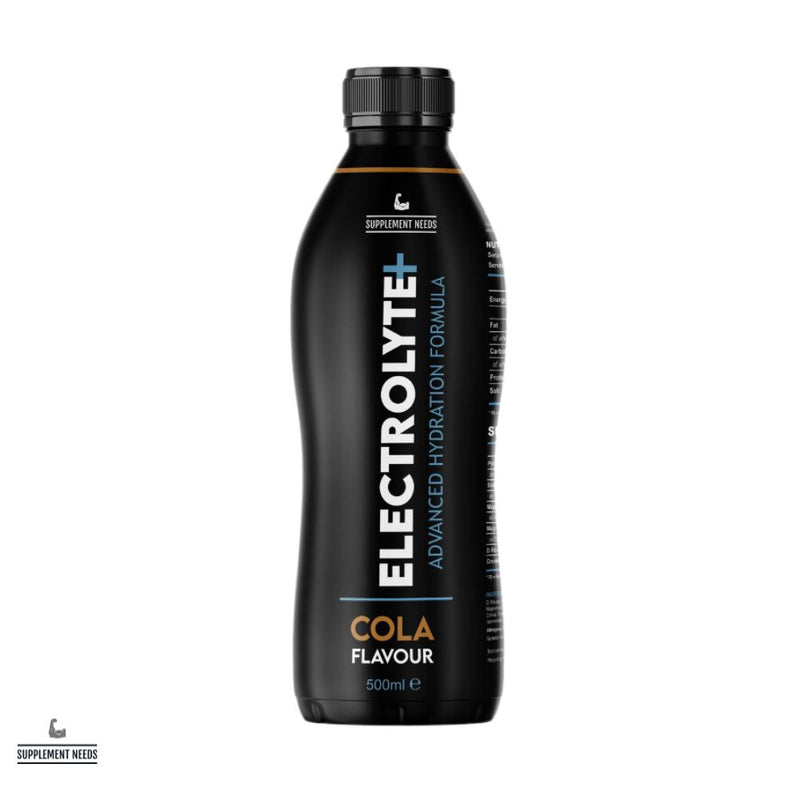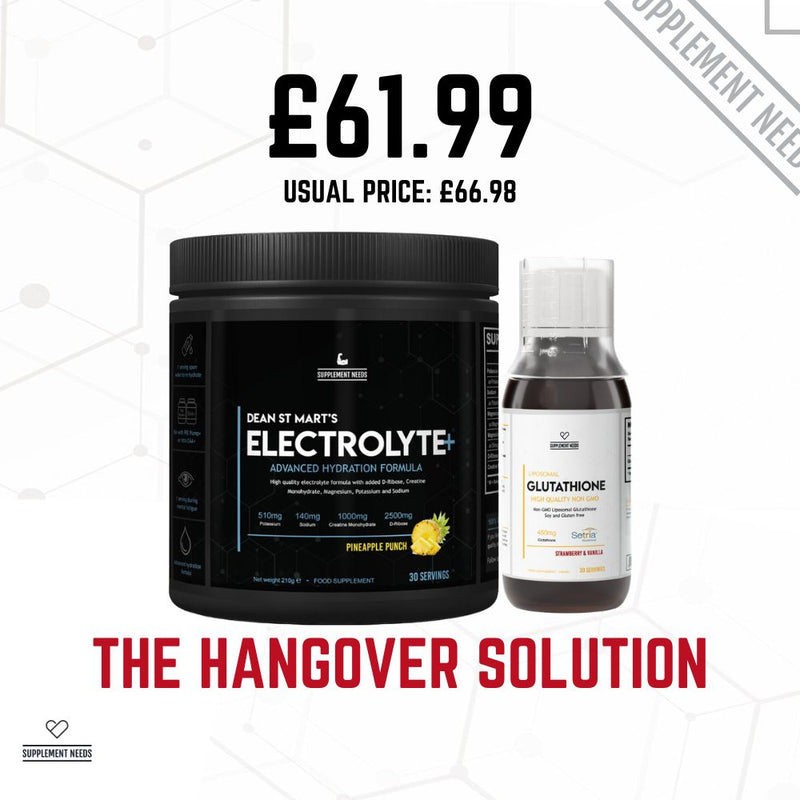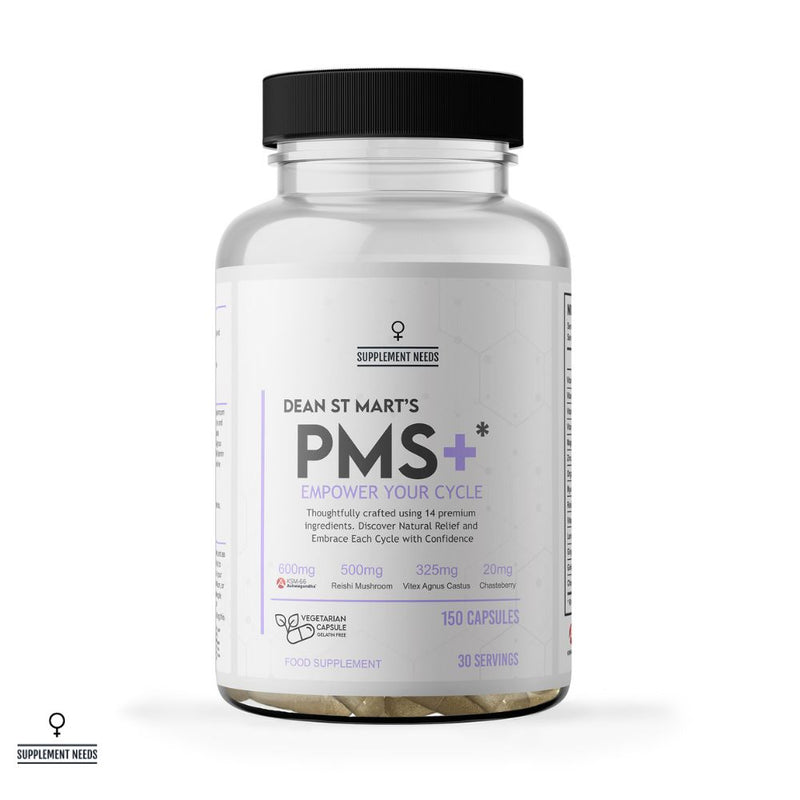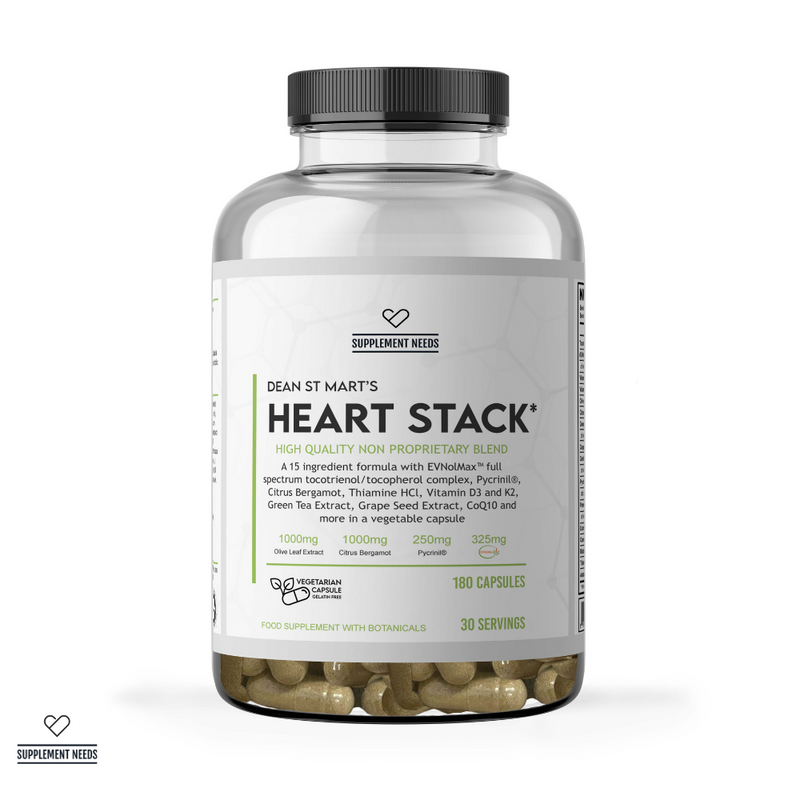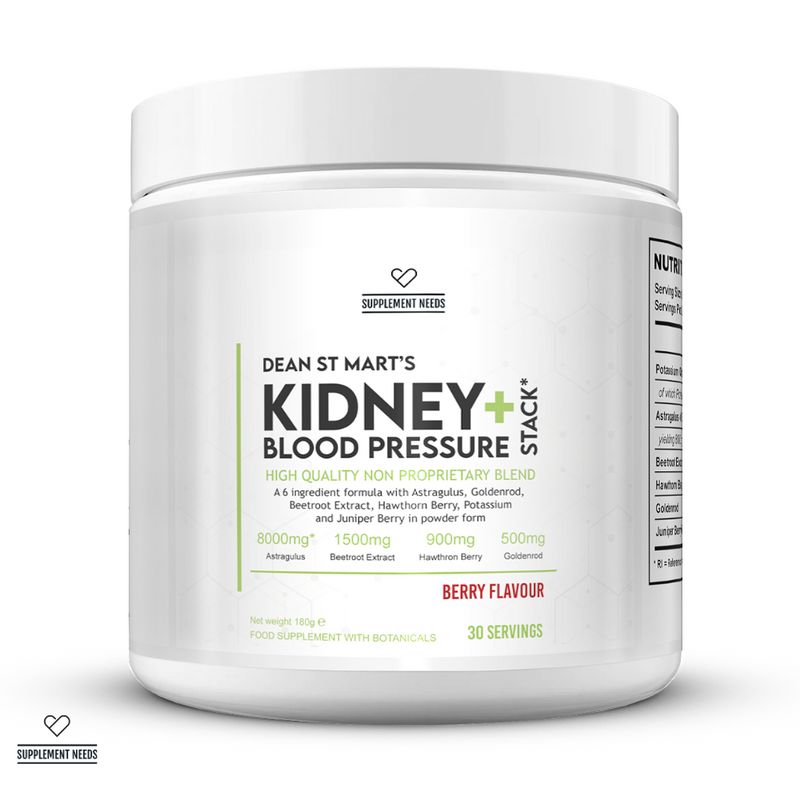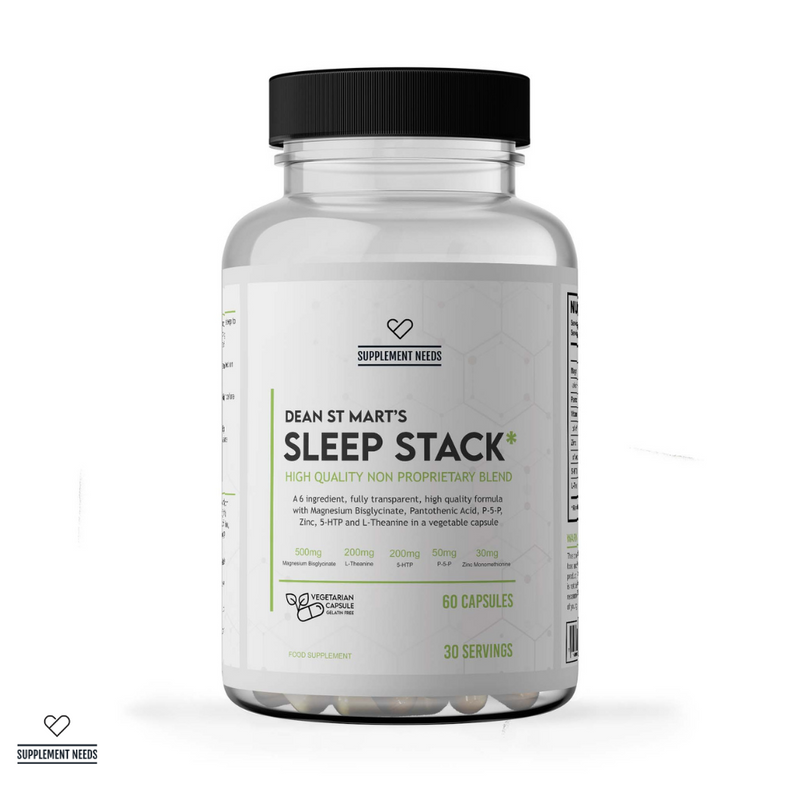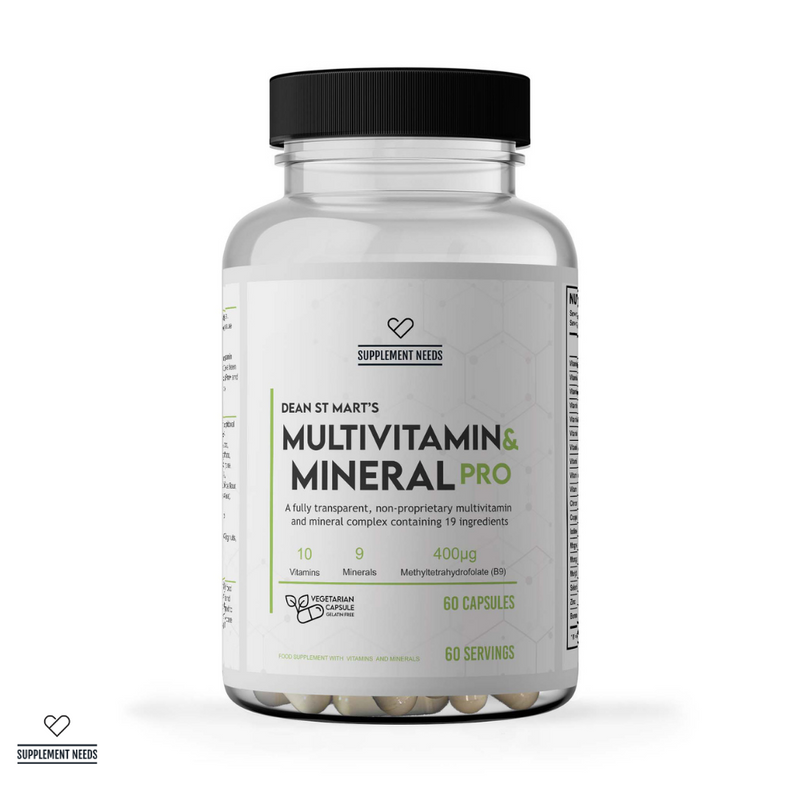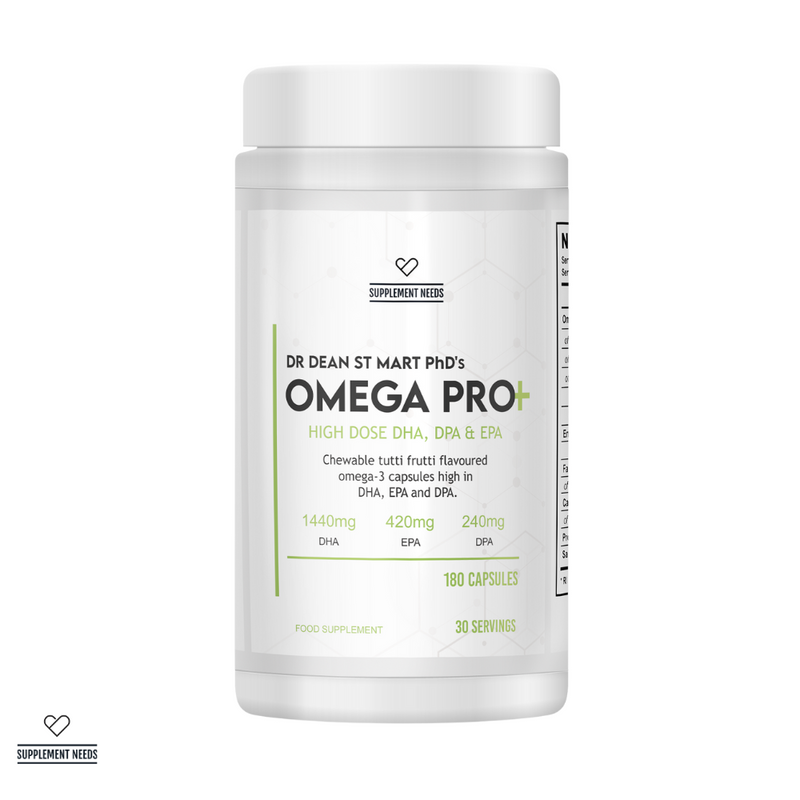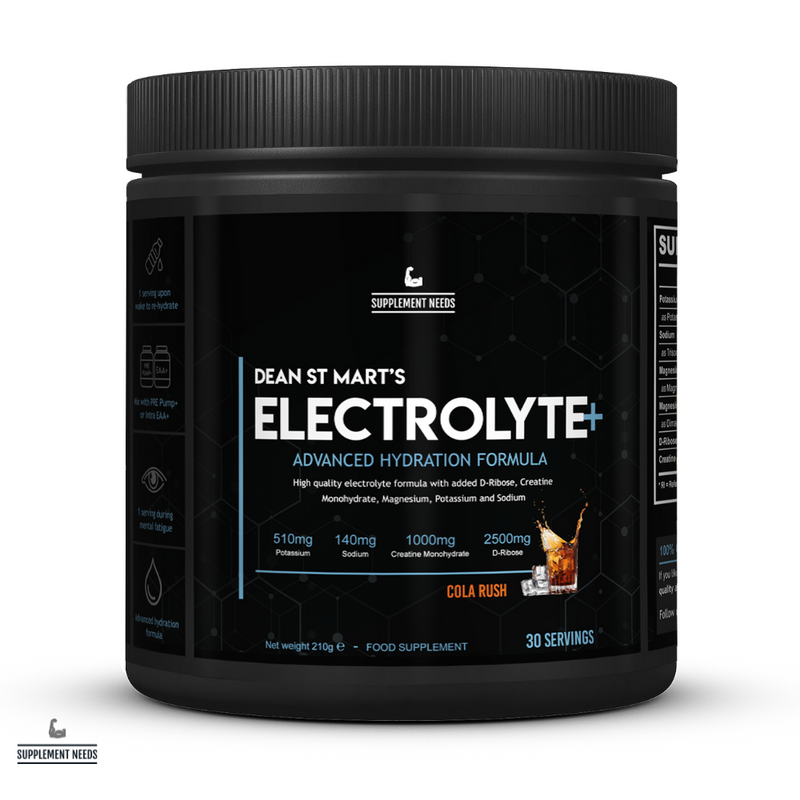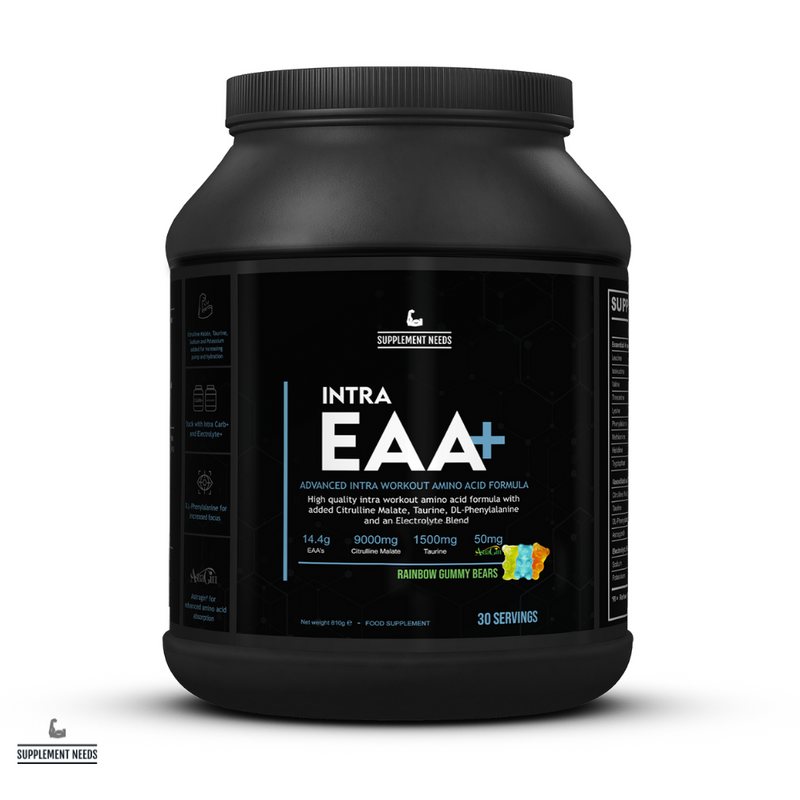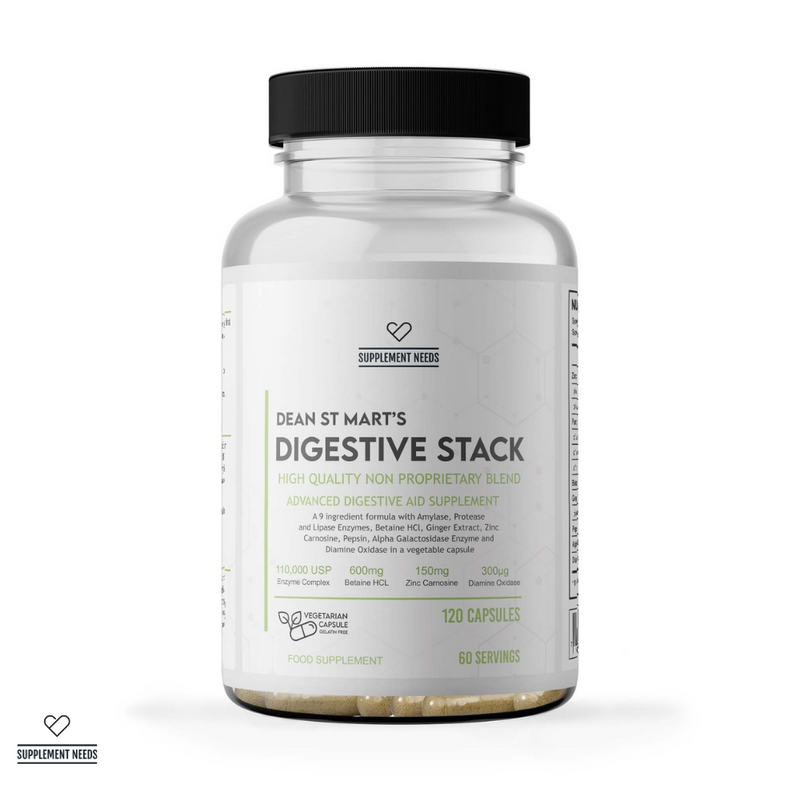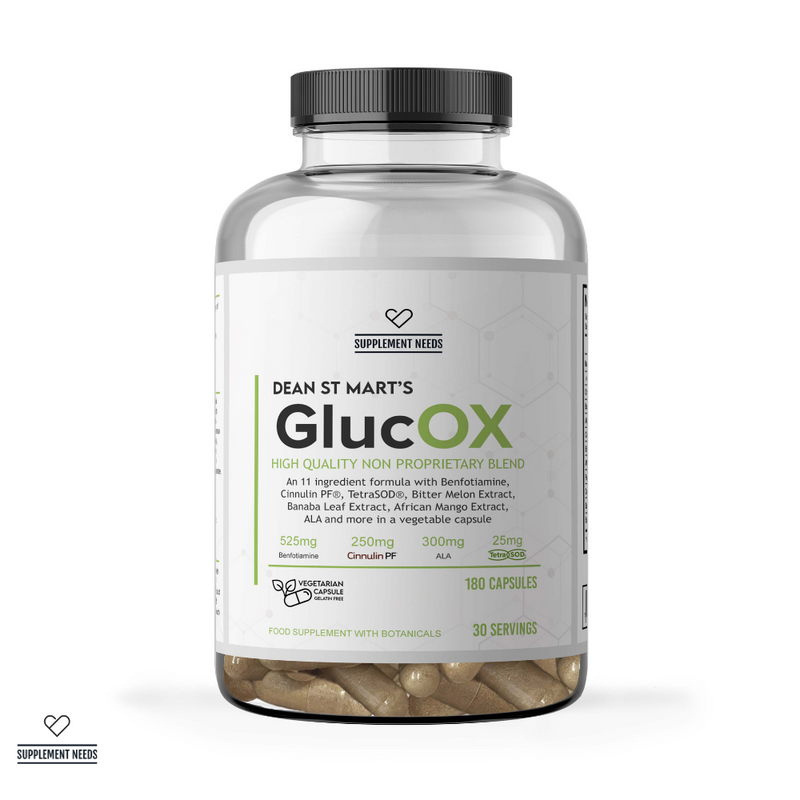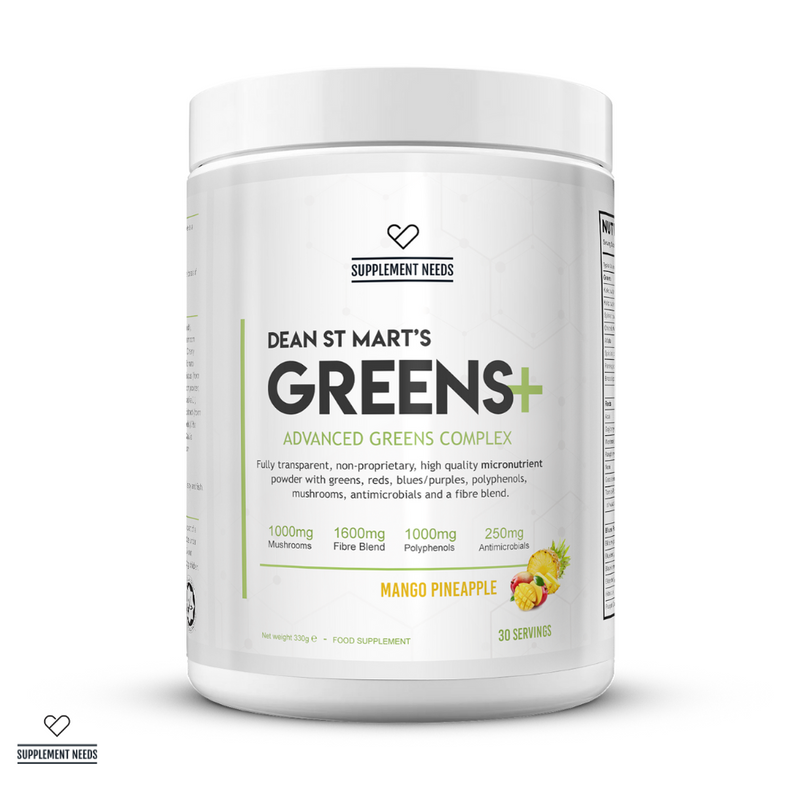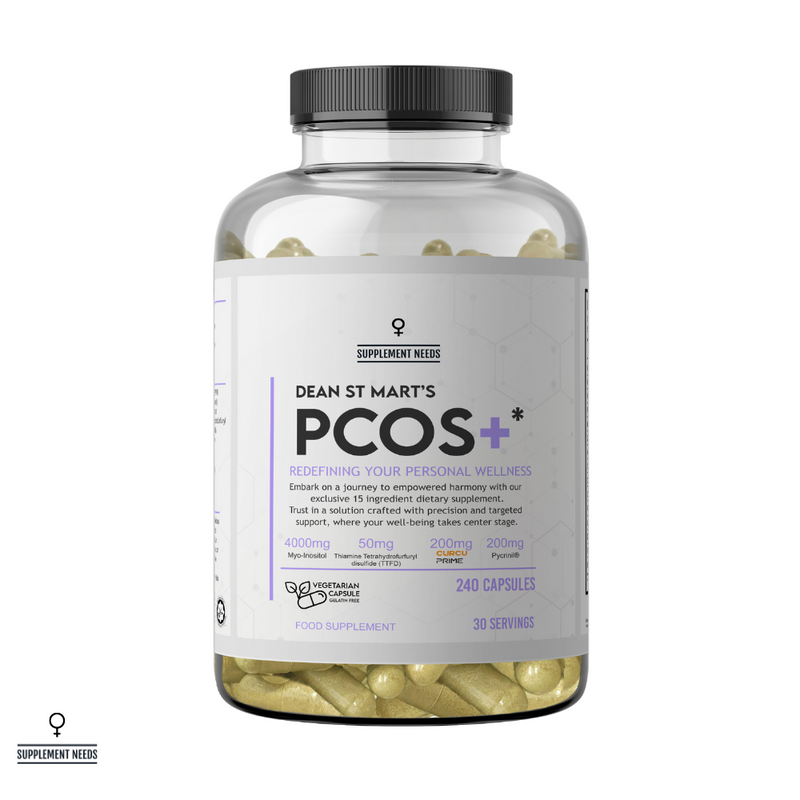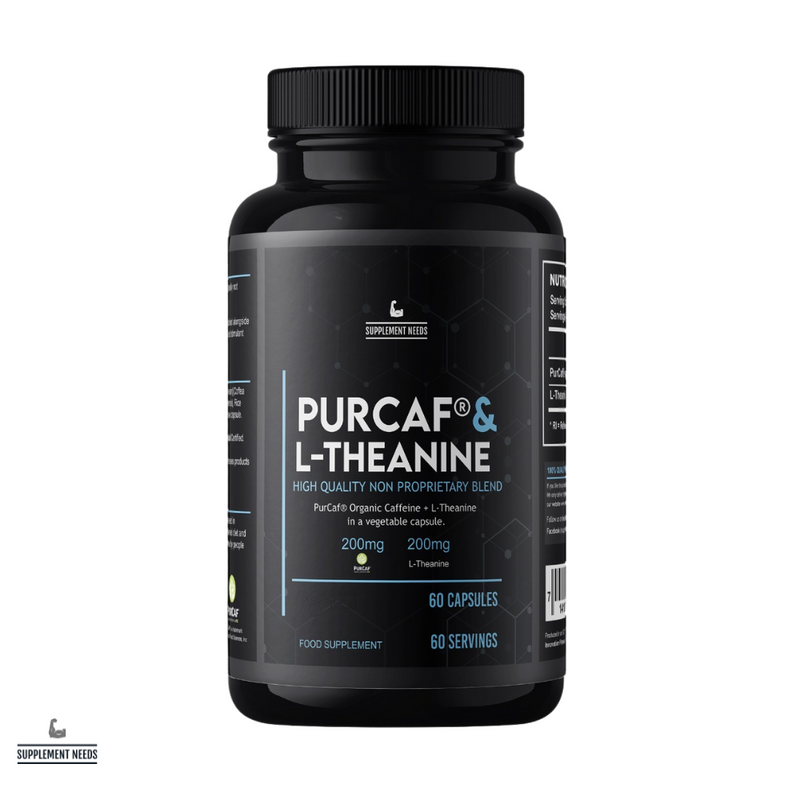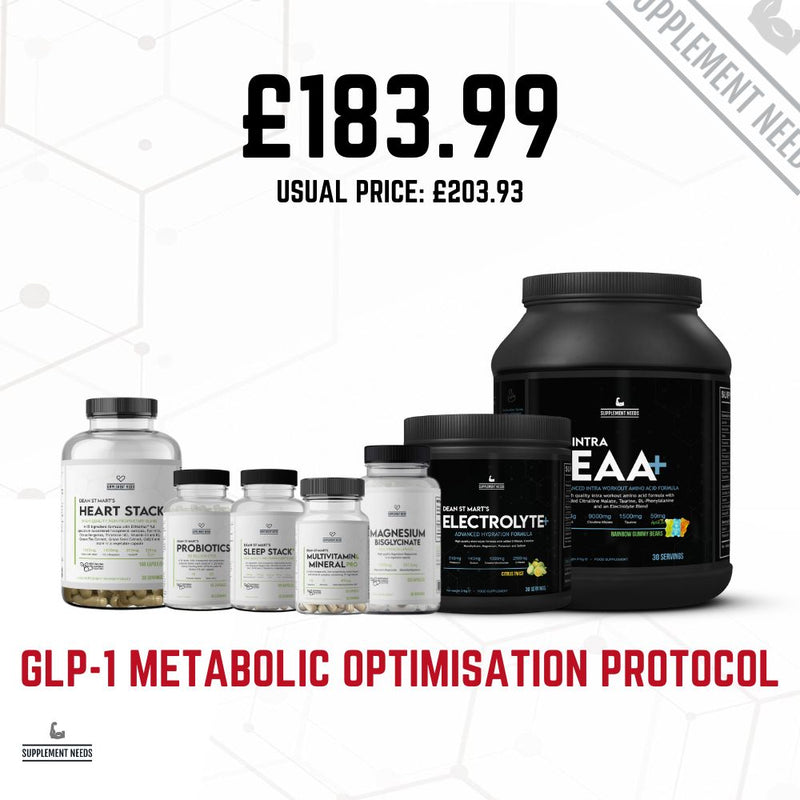Maintaining a balanced diet, a regular sleep schedule, and fuelling your body properly to match your activity levels is essential for your overall health and wellbeing. But, when one of these factors goes out of balance, it can leave you feeling tired all the time.
More specifically, with this article, we’re talking about your diet. Making sure you eat enough of the macronutrients, namely carbohydrates, protein and fat, is one thing; but you also need to be mindful about your vitamin and mineral consumption. These tiny molecules are essential for your body to function; and, in cases of certain deficiencies, can leave you feeling exhausted with no external explanation.
To help you make informed choices about your health, we’ve broken down some of the key vitamins for energy and tiredness. We’ll explain how they work, why the body needs them, and what signs to look out for that may indicate a deficiency.
What are vitamins and minerals?
To fully understand what we mean by vitamin deficiencies, we need to start at the beginning: what are vitamins? And, in a similar vein, what are minerals? Both can have an impact on your health and wellbeing, as you’ll see later in this article.
Both vitamins and minerals fall under the dietary classification of micronutrients. Unlike the macronutrients we mentioned above (which you need in large amounts to do everything from building muscle to generating energy for daily living), the body needs comparatively trace amounts of micronutrients to stimulate biochemical processes1. These micronutrients are involved in everything from making blood cells to creating the enzymes and hormones needed for healthy growth.
Vitamins and minerals are often referred to together because they hold similar functions in the body. However, there is a clear distinction between the two2.
-
Vitamins are organic micronutrients, both because they contain carbon in their chemical structure, and come from plants and animals.
-
They are further categorised into fat-soluble (like Vitamins A, D, and E) or water-soluble (like Vitamins B and C). This label refers to how they are stored in the body.
-
Regular consumption of water-soluble vitamins is essential to reduce the risks of a deficiency3 (as they are transient by nature; your body can’t store them like fat-soluble vitamins).
-
Minerals are inorganic micronutrients like salts and essential metals. These are not carbon-based, but can still be found in a regular, healthy diet.
-
Minerals are subcategorised into macrominerals (those of which the body needs over 100mg per day), and microminerals (those needed under this daily threshold). Examples of the former include calcium, magnesium, sodium, and potassium; while the latter group includes iron, copper, and zinc.
Guide: for more information about vitamins and minerals, read our Ultimate Guide to Buying Vitamins & Multivitamins.
What does it mean to have a vitamin deficiency?
For the majority of vitamins and minerals, your body can’t produce them on its own. This means you need to get them from alternative sources in your diet. Interestingly, Vitamin D is an outlier here, as this can be made in the skin when you’re exposed to the UV rays in sunlight.
When your sources are insufficient (basically, if you don’t get enough of a certain vitamin or mineral), this is classified as a deficiency. Or, in scientific literature, you may find this referred to as hypovitaminosis.
However, it’s not just the content of your diet that will affect your vitamin intake. Malabsorption and impaired metabolism, where your body doesn’t (or can’t) absorb, use, or regulate vitamins and minerals properly, may also result in a deficiency4, even if your diet is well-balanced.
Vitamin deficiencies aren’t an immediate occurrence; one slightly less nutritious meal every once in a while is not usually enough to throw off the balance. A vitamin deficiency tends to happen after weeks or months of consistently low or missing sources of various micronutrients.
Note: if you do have a vitamin or mineral deficiency, it’s important to rectify this to improve not just your health, but also your quality of life. A doctor will usually ask questions about your symptoms, and request blood tests to identify potential underlying causes.
What vitamin deficiencies can cause tiredness?
Vitamin deficiencies, and a lack of certain minerals, can present themselves via a wide range of symptoms. Of these, tiredness can be quite common, but also one that feels like it affects your day-to-day life the most. As such, knowing what the best vitamins for tiredness are can make a massive difference to how you feel.
Below, we’ve highlighted some of the most common vitamin and mineral deficiencies that can make you feel tired, and why they present that way.
Iron
If you notice elevated levels of fatigue, one of the first options to consider is that you may have an iron deficiency.
Iron is considered essential to human life, as it plays a role in several processes, such as5:
-
DNA synthesis, metabolism and repair: iron is essential for DNA creation and proper function. For example, iron is used by a lot of DNA repair enzymes as a cofactor6 as it helps them to unravel DNA strands for use and repair.
-
For reference, in biology, a cofactor is a non-protein chemical that helps with proper enzyme function. It’s basically like a helping hand that supports the enzyme while it works7.
-
Heme production89: heme is a key component of hemoglobin, which is the protein within your red blood cells that is responsible for oxygen transportation. During heme production, an iron molecule is attached to a porphyrin, completing the structure of a heme.
-
Hemoglobin is made up of four heme groups surrounding a globin group. This is then covered by various lipids (fats) and other molecules within a cell membrane to form red blood cells.
-
Iron is essential here, as it is the molecule responsible for creating a reversible bond with oxygen. Four iron molecules from the heme groupings can each carry an oxygen molecule, which is then transported around the body via your blood stream.
In simple terms, iron is key for transporting oxygen around the body. When you have an iron deficiency, your body may produce fewer red blood cells, or they may be inefficient (as they lack the hemoglobin required to carry oxygen)10. This reduces the amount of oxygen available to organs and tissues.
Symptoms of an iron deficiency
Tiredness, or fatigue (a more severe, consistent form of tiredness), can be a result of an iron deficiency due to this lack of oxygen circulating around the body. Oxygen is essential for cellular respiration to generate energy; when this is insufficient, you can feel tired.
Additionally, with an iron deficiency, your heart has to work harder to pump as much oxygenated blood around the body, contributing to your fatigue.
Alongside tiredness and fatigue, other symptoms of iron deficiency anaemia include:
-
Shortness of breath.
-
Heart palpitations (where your heartbeat becomes more noticeable).
-
Skin pallor (paler than usual skin tone).
-
Headaches.
-
Brittle or spoon-shaped nails.
Causes of an iron deficiency
According to research, approximately 25% of people worldwide have anaemia; of this number, an iron deficiency is responsible for around half (50%) of these cases11. There are a number of reasons you may experience an iron deficiency12, such as:
-
Menstruation: heavy periods, and the resultant blood loss, can cause an iron deficiency which should be treated with medicine or supplements.
-
Pregnancy: elevated demands for iron during pregnancy, due to increased blood volume and fetal growth, can cause anaemia if your diet doesn’t match your needs.
-
Bleeding in the stomach and intestines: stomach ulcers, inflammation in your bowels, or taking an excess of non-steroidal anti-inflammatory drugs (NSAIDs) like ibuprofen and aspirin can cause an iron deficiency.
Treatments for an iron deficiency
To counteract an iron deficiency, there are a range of dietary sources to increase your intake. These include:
-
Dark-green, leafy vegetables like watercress and spinach.
-
Fortified cereals and grains.
-
Meat, especially red meat like beef, lamb, and liver.
-
Dried fruits like apricots and raisins.
-
Pulses like beans, peas, and lentils.
You can also take supplements containing iron to help support your overall health and wellbeing.

Here at Supplement Needs we have developed an Iron-supplement; Supplement Needs Vegan Ferrochel. Created by industry-leading formulator Dr Dean St Mart PhD, Vegan Ferrochel delivers 27mg of Elemental Iron per serving.
Note: the recommended daily allowance (RDA) for adults is 8-18mg/day.13
Vitamin B12 and folate
The B vitamins are heavily involved in various processes around the body, from releasing energy from food to keeping the nervous system healthy and functioning correctly14. Within this wider category, there are two main culprits in which extreme tiredness and exhaustion occurs from a deficiency: Vitamin B12 (cobalamin) and folate (also known as folic acid, or vitamin B9).
Note: we have grouped Vitamin B12 and folate together as they are involved in similar roles, and are usually assessed together due to their ‘close relationship of metabolism’.15
Vitamin B12 is heavily involved in16:
-
Supporting and regulating the nervous system: Vitamin B12 is essential for the healthy development, myelination, and function of the central nervous system.
-
Myelination is the process where a myelin (a type of membrane made of fats and proteins) covers nerve fibres (called axons). This layer insulates the nerve axons, helping to transmit signals rapidly and improve the nerve response to stimuli17. Effectively, this means your nervous system can react and send messages faster.
-
Red blood cell formation: Vitamin B12 is involved in DNA synthesis during cell division. In bone marrow, where red blood cells are created, this is especially important to ensure that they develop properly.
-
A lack of Vitamin B12 can disrupt the production of red blood cells, causing something called megalobastic anaemia. This is a specific type of anaemia where the red blood cells are too large and are unable to effectively carry oxygen around the body due to impaired DNA synthesis18.
-
Enzyme cofactor: Vitamin B12 also acts as a cofactor for two enzymes, called methionine synthase, and L-methylmalonyl-CoA mutase. As we explained above, as a cofactor Vitamin B12 helps these enzymes to function properly.
-
Methionine synthase: this is a catalyst for the production of methionine, which is an essential amino acid that helps make proteins in the body.
-
L-methylmalonyl-CoA mutase: your body uses this to make succinyl-CoA, which is involved in making propionate (a fatty acid), and plays a role in the citric acid cycle (also known as the Krebs cycle, this is a series of chemical reactions that happen during cellular respiration).
Folate, or B9, performs a similar role, and is important for19:
-
DNA synthesis and repair: the body uses the active form of folate, called tetrahydrofolate (THF) to synthesise purine and pyrimidine, which are the building blocks for DNA.
-
Purines include adenine and guanine, pyrimidines include cytosine and thymine - these are the A,G,C and T you may recognise from DNA diagrams.
-
Folate acts as a cofactor for the production of these essential chemicals, helping them to function properly.
-
Red blood cell production: similarly to Vitamin B12, folate is used during cell division. A lack of this can also cause megaloblastic anaemia, where the red blood cells develop asymmetrically and are unable to effectively transport oxygen around the body.
-
Neural tube development20: during foetal development, folic acid has been proven to play an integral role in reducing incidents of neural tube defects (NTDs).
-
NTDs happen when the neural tube (that goes on to form the spine and brain) doesn’t develop properly, and can occur very early during a pregnancy (often before the pregnancy is confirmed).
Note: folate is the naturally occurring form of this vitamin. The synthetic form used in nutritional supplements or added to fortify foods is referred to as folic acid.
Symptoms of a Vitamin B12 or folate deficiency
Extreme tiredness and exhaustion are potential symptoms of a Vitamin B12 or folate deficiency, largely because of their impact on red blood cell production. When your red blood cells are too large (as in megaloblastic anaemia), they can’t carry oxygen effectively where it’s needed, reducing energy production.
Other symptoms include21:
-
Pins and needles.
-
Shortness of breath.
-
Headaches.
-
Heart palpitations.
-
Loss of appetite and indigestion.
Causes of Vitamin B12 or folate deficiency
There are several reasons why you may develop a Vitamin B12 or folate deficiency (not just limited to your diet).
For Vitamin B12 deficiencies, common causes include22:
-
Pernicious anaemia: this is an autoimmune response that affects your stomach. To absorb Vitamin B12, your body combines with a protein called intrinsic factor. With this type of anaemia, your immune system attacks the cells that produce this protein, which means you can’t absorb the vitamin properly.
-
An imbalanced diet: the main dietary sources of Vitamin B12 include meat, fish, and dairy. If you follow a strict vegetarian or vegan diet, you are usually more at risk of developing a deficiency and may need consistent supplements.
-
Stomach or intestinal issues: operations that remove or limit stomach capacity, or intestinal problems like Crohn’s disease, can affect how well your body absorbs Vitamin B12.
-
Medicinal reactions: some medicines, like metformin, can reduce the amount of Vitamin B12 in your diet.
-
Functional deficiencies: sometimes people can experience the symptoms, even when their blood Vitamin B12 levels appear to be normal. This can be because of a functional issue with the proteins that transport Vitamin B12 around the body.
Causes of a folate deficiency include:
-
An imbalanced diet: green vegetables like broccoli and asparagus, chickpeas, and brown rice are all great sources of folate. If you have a consistently imbalanced diet, you may develop a deficiency.
-
Malabsorption: sometimes the body is unable to absorb folate effectively, leading to a deficiency. Conditions like coeliac disease, which affect the digestive system, can cause this.
-
Excessive urination: if you urinate frequently, you may lose folate before your body has a chance to absorb it properly.
-
Medicinal reactions: certain medicines can inhibit folate absorption, or reduce the amount available in the body. These include some anticonvulsants (which are epilepsy treatments), and methotrexate (an anti-inflammatory often used to treat arthritis).
Treatments for a Vitamin B12 or folate deficiency
Depending on the reason for your Vitamin B12 or folate deficiency, the treatments can vary.
For Vitamin B12, treatments include:
-
A Vitamin B12 injection, called hydroxocobalamin. This may be needed anywhere from twice a year to every two months, depending on the underlying cause.
-
Daily Vitamin B12 tablets.
-
Vitamin B12 rich foods, like meat, salmon, dairy, and eggs.
For folate deficiencies, treatments include:
-
Daily folic acid tablets. This treatment course usually lasts for four months, at which point you will likely be reassessed to decide if more is required.
-
Folate rich foods like green vegetables, brown rice, and chickpeas.
Whilst not explicitly a treatment for a deficiency, additional folic acid supplements are recommended if you are within the first trimester of pregnancy, or looking to conceive, to support the growth of a healthy foetus.

If you struggle to get the right balance of vitamins in your diet, you might want to consider supplemental support. At Supplement Needs, our Advanced Vitamin B Complex is a fantastic source of vitamins for tiredness and energy release.
Formulated with eight B vitamins, including 5-Methyltetrahydrofolate (an incredibly bioavailable form of folic acid), and Methylcobalamin (the activated form of Vitamin B12), this supplement has been specially designed to optimise your daily health, and provide valuable vitamins for energy and tiredness relief.
Vitamin D
Unlike the majority of vitamins and minerals, there are relatively few dietary sources of Vitamin D. These are mainly limited to oily fish, red meat, egg yolks, and liver; but the mass movement to fortified foods has increased the options for dietary Vitamin D.
Instead of using foods, the body primarily produces Vitamin D in the skin using UVB rays from the sun (this is called cutaneous production23). Vitamin D is then converted to an active form, called 25-hydroxyvitamin D, in the liver and kidneys.
However it’s obtained, Vitamin D is involved in a range of bodily processes, including24:
-
Calcium absorption: Vitamin D is heavily involved with regulating calcium absorption and homeostasis. Or, to put this another way, Vitamin D helps to transfer calcium into, around, and out of your cells to where it’s needed.
-
Calcium is essential for bone health, but it’s also involved in muscle contraction; a calcium deficiency can cause painful cramps and muscle spasms (called hypocalcemic tetany).
-
Bone formation: calcitriol, aka 1-25-dihydroxycholecalciferol, or 1,25(OH)2D, is involved in the differentiation of osteoblasts, osteoclasts, and the production of various proteins involved in bone formation. What this means more simply, is that the active form of Vitamin D helps to manage bone growth and resorption. Without Vitamin D, bones can become brittle, thin, weak or misshapen25.
-
Differentiation is the process where cells become more specialised, allowing them to perform specific functions. Osteoblasts are cells that specialise in bone cell production, called osteogenesis (or ossification more generally)26. Osteoclasts break down old or damaged bone cells to make way for newer, healthier growth.
-
Cell proliferation: a less well-known function of Vitamin D is that it can help regulate cell proliferation (production). Research has shown that hyperproliferative disorders, like psoriasis, can be treated with Vitamin D analogs.
-
Hormone secretion: Vitamin D has also been shown to stimulate insulin secretion and inhibit parathyroid hormone secretion. Hormone regulation is essential for maintaining your internal balance.
-
Insulin is essential for proper blood sugar management.
-
Parathyroid hormones work with Vitamin D to manage calcium and phosphate levels.
Symptoms of Vitamin D deficiency
Many people with a Vitamin D deficiency are asymptomatic, and may not know they aren’t getting enough. However, some symptoms that might indicate a Vitamin D deficiency are27:
-
Bone pain.
-
Muscle pain, weakness, or cramps.
-
Mood changes, e.g. depression.
-
Fatigue.
One of the lesser known vitamins for tiredness, a vitamin deficiency has been shown to cause fatigue for a variety of reasons. These include, but are not limited to; regulating oxidative stress and inflammation, an overabundance of which can cause fatigue; regulating serotonin and dopamine, which when imbalanced can cause feelings of tiredness; and impact how red blood cells can deform and move throughout the body.
Causes of Vitamin D deficiency
Vitamin D deficiencies are largely caused by insufficient exposure to sunlight. This could be because of:
-
Weather: during a UK winter, it can be difficult to produce enough Vitamin D in the skin due to the lack of sunlight. In fact, according to Government data, around 1 in 6 adults in the UK have low levels of Vitamin D.
-
Personal circumstances: different lifestyles or habits can impact your vitamin D levels.
-
If you are housebound for any reason, or spend the majority of your time indoors (at work for example), this can inhibit your exposure to sunlight and cause a deficiency.
-
This is also true if you usually wear clothing that covers up most of your skin when outside.
Treatments for Vitamin D deficiency
Treatment for a Vitamin D deficiency is relatively simple. According to the NHS28, all adults and children over four years old should consider taking a 10mg daily supplement during the autumn and winter.
If you are at risk of developing a deficiency, i.e. if you fall into any of the categories we mentioned above, you may want to consider taking a Vitamin D supplement year round.
With the NHS recommending that adults take Vitamin D supplements - particularly during the autumn and winter months - you may want to consider adding a Vit D supplement to your diet.

Here at Supplement Needs we have developed Vitamin D3 as this is the optimal form of Vitamin D. Why? Because Vitamin D3:
-
Is the form of Vitamin D that is produced when UVB rays hit your skin. In other words, it’s exactly the form of Vitamin D3 that your body would make naturally.
-
Has a longer half-life in the bloodstream (approximately 2-3 weeks), compared to D2 (approximately 1-2 weeks).
-
Binds more efficiently to Vitamin D binding protein (DBP) in the blood.
Our Supplement Needs Vitamin D3 has been supplemented by Dr Dean St Mart PhD to yield 5000iu.
Magnesium
Magnesium is one of the essential electrolytes your body needs to function properly. In fact, it’s the fourth most common cation (positively charged molecule) in the body29.
Electrolytes are charged ions (either negatively or positively) that are important for regulating electrical neutrality in your cells, and helping electrical impulses pass through nerves and muscles. Your body needs to be electrically neutral to function properly, and magnesium helps to maintain this balance.
Looking at magnesium more specifically, this mineral is used in more than 300 different metabolic processes in the body. This includes, but is certainly not limited to30:
-
Energy production: to make energy on a cellular level, the body uses a molecule called adenosine triphosphate, or ATP. When the phosphate bonds in ATP are broken down (through a process called hydrolysis), they release energy that your body uses to function31.
-
Around 90% of cellular ATP is bound to magnesium in a biologically active form, meaning magnesium is essential for energy production. In addition to this, magnesium has been shown to help align ATP and adenylate kinase, or AK, for improved reaction speed32. Adenylate kinase is a catalyst for ATP hydrolysis.
-
To put this another way, magnesium has been shown to be both essential to energy production, but also to speeding the reaction up for quicker available energy.
-
Muscle contraction: magnesium is involved in making sure your muscles can contract properly by helping to regulate the movement of calcium and potassium ions across the cell membrane; increased concentrations of calcium in the cells are a trigger for muscle contraction33.
-
Magnesium is a natural calcium channel blocker, which supports healthy heart function by relaxing the blood vessels. This is valuable for hypertension (high blood pressure)34.
-
Magnesium is also a cofactor in a reaction called the Na+K+ATPase Pump (or the sodium potassium pump), which is how your body maintains balanced levels of sodium and potassium in your cells35. This balance helps ensure electrical signals and nerve impulses can be transported around the body properly.
-
Parathyroid hormone function: as we explained above, your parathyroid hormones help to regulate calcium and vitamin D levels. Magnesium is an important cofactor to produce parathyroid hormones (PTH), which is another way it helps regulate calcium in the body36.
Magnesium is also involved in regulating the immune response by stimulating immunoglobulin production (these are the Y-shaped proteins that help identify bacteria and viruses); supporting bone health through the structural development of bone tissues37; while a deficit has been linked to mood disorders like depression and anxiety.
Note: while research is still in the early stages, there is positive preliminary evidence to suggest magnesium can help to improve sleep quality.38
Symptoms of magnesium deficiency
One of the first signs of a magnesium deficiency is fatigue. Since magnesium plays such an important role in ATP and energy production, this makes sense; when the body doesn’t have enough magnesium, it may struggle to make energy. This leaves you feeling lethargic and tired.
Other symptoms include39:
-
Muscle spams, stiffness, and weakness.
-
Low mood or increased anxiety.
-
Nausea and vomiting.
-
Loss of appetite.
Causes of magnesium deficiency
There are a selection of conditions or circumstances that can cause a magnesium deficiency, such as40:
-
A low dietary intake: consistently not getting sufficient magnesium in your diet can lead to a deficit.
-
Poor absorption: gastrointestinal conditions, such as Crohn’s disease or coeliac disease, can affect the proper absorption of magnesium in the digestive system. A magnesium deficit may also be seen in people with type 2 diabetes, or insulin resistance.
-
Age: magnesium absorption decreases with age, and older people are more likely to be on medications or have medical conditions that may impact their magnesium absorption.
Treatments for magnesium deficiency
If you have been found to have a magnesium deficiency, there are a few ways you can boost your intake. These are:
-
Through dietary sources: there are a wide selection of foods that are magnesium rich, like green leafy vegetables (as magnesium is central to the structure of the chlorophyll molecule), legumes, seeds, nuts, seafood, and whole grains.
-
Oral supplementation: if you struggle to get enough magnesium in your diet, you may want to consider adding a supplement to your regular routine.
-
IV supplementation: for severe cases, you may get intravenous magnesium at the hospital.
Guide: for more information about the broader benefits of Magnesium supplementation, read our guide What Are the Potential Benefits of Magnesium Bisglycinate?

If you’re looking to improve your magnesium intake, you’ve come to the right place. At Supplement Needs, our Magnesium Bisglycinate is an exceptionally bioavailable, chelated form of magnesium designed for optimal absorption.
Chelation, where a metal molecule is bonded to another (usually an amino acid), improves mineral absorption, ensuring you get the most from each dose.
Top tip: try stacking alongside Sleep Stack and PM Priming Stack for the ultimate pre-bedtime combo!
How are vitamin deficiencies diagnosed?
If you are presenting symptoms that may be caused by a vitamin deficiency, your doctor will typically order blood tests to help diagnose any issues. These can test for a range of elements, depending on what may be lacking.
-
Iron deficiency: to diagnose an iron deficiency, there are a range of blood tests available, including41:
-
Complete blood count (CBC): this tests your overall hemoglobin and hematocrit levels (the percentage of red blood cells in blood serum). It also measures your corpuscular volume, which looks at the size of your red blood cells. If they’re smaller than usual, this could signify iron-deficiency anaemia.
-
Serum iron: this test measures how much iron is in your blood. This may show as normal, even if the overall iron levels are low, which is why other tests are done to confirm if you have anaemia.
-
Serum ferritin: ferritin is a protein that helps your body store iron. Measuring this helps doctors to see how much of your iron stores have been used.
-
Transferrin levels: transferrin is a protein that is responsible for transporting iron around the bloodstream. If you have iron deficiency anaemia, this test would show higher levels of transferrin without an iron molecule.
-
Vitamin B12 or folate deficiency: a selection of blood tests are available to help you understand if you may have a Vitamin B12 or folate deficiency. These include42:
-
Complete blood count (CBC): as with above, this measures the size and percentage of red blood cells. If they are larger than normal, this could be a sign of megaloblastic anaemia.
-
Serum folate and Vitamin B12 levels: as the name suggests, this blood test looks at how much folate and Vitamin B12 is available in the body.
-
A peripheral blood smear: this can help reveal the possible presence of megaloblasts (larger than normal red blood cells).
-
Vitamin D deficiency: to conclude if you have a Vitamin D deficiency, a doctor will usually order the following blood tests:
-
Total serum 25-hydroxyvitamin D: this measures the amount of 25-hydroxyvitamin D in the blood. While the exact figures can vary depending on biological factors, if your serum level is below 30ng/mL, you’re considered deficient.
-
If you have a confirmed deficiency, you may also be assessed for secondary hyperparathyroidism through PTH (parathyroid hormone) and serum calcium level tests.
-
Magnesium deficiency: there are a collection of tests to identify if you have a magnesium deficiency, including:
-
Serum magnesium: this measures how much magnesium is in your blood.
-
Urine magnesium levels: a urine magnesium test can help to identify the causes of a magnesium deficiency43 (for example, issues with absorption).
-
You may also be tested for low levels of calcium and potassium, as these can be impacted by low magnesium intake.
Choosing the best vitamins for tiredness
Whether you’re looking for combined support, or want to add specific vitamins for energy and tiredness into your diet, Supplement Needs has you covered.
Our commitment to superior quality and data-driven formulas mean that our vitamin and mineral supplements really stand out from the rest. But how? Well, like this:
Bioavailability: unlike cheap supermarket supplements, Supplement Needs uses highly bioavailable vitamins and minerals, in their active forms. Bioavailability is a subcategory of absorption that describes how much of an ingredient makes its way into circulation within the body. Higher bioavailability means your body is much more likely to absorb and use the supplements’ contents.
Ingredient transparency: Supplement Needs is completely transparent about the ingredients (and the dosage of those ingredients) in our supplements. There aren’t many other supplement brands that can say the same thing…
Developed by experts: at Supplement Needs, our vitamin and mineral supplements have been developed by renowned industry leader Dr. Dean St Mart PhD. Dr Dean holds a double first class honours degree in chemistry and pharmaceutical chemistry, and a PhD in synthetic organic chemistry and fluorescence spectroscopy.
Quality manufacture: Supplement Needs products are manufactured to the highest standards, including GMP (Good Manufacturing Practices) and ISO 22000:2018.
Invest in your future health today with Supplement Needs’ range of multivitamins, vitamins, and minerals…
Find the best vitamins for tiredness at Supplement Needs
Tiredness and fatigue can have a serious dampener on your daily life. Find supplemental support right here at Supplement Needs within our Health Range. Alongside our vitamins for energy and tiredness, we have excellent collections for Sleep Support, Joint Health, Hormone Support, and much more.
Shop multivitamins, vitamins and minerals at Supplement Needs now
For more insights and information about supplements, read the Supplement Needs blog…
Busting the Biggest Supplement Myths | Why You Should Avoid Cheap Vitamins and Multivitamins | The Importance of Sleep Hygiene
Disclaimer
The information on this website should not be used as a substitute for professional medical advice. If you have any questions about your health, or are planning to change your diet, please contact your doctor.
References
1. Espinosa-Salas, S., 2023, ‘Nutrition: Micronutrient Intake, Imbalances, and Interventions’, StatPearls [Internet]. Available at: https://www.statpearls.com/point-of-care/157663. Accessed on 21st July 2025.
2. Morris, A.L., & Mohiuddin, S.S., 2023, ‘Biochemistry, Nutrients’, StatPearls [Internet]. Available at: https://www.ncbi.nlm.nih.gov/books/NBK554545/. Accessed on 21st July 2025.
3. Lykstad, J., & Sharma, S., 2023, ‘Biochemistry, Water Soluble Vitamins’, StatPearls [Internet]. Available at: https://www.ncbi.nlm.nih.gov/books/NBK538510/. Accessed on 29th July 2025.
4. Combs, G.F., & McClung, J.P., 6th ed., The Vitamins: Fundamental Aspects in Nutrition and Health, Academic Press. Available at: https://www.sciencedirect.com/science/article/abs/pii/B9780323904735000185. Accessed on 22nd July 2005.
5. Barney, J., & Moosavi, L., 2023, ‘Iron’, StatPearls [Internet]. Available at: https://www.ncbi.nlm.nih.gov/books/NBK542171/. Accessed on 28th July 2025.
6. Puig, S., et al., 2017, ‘The elemental role of iron in DNA synthesis and repair’, Metallomics., 9(11): 1483-1500. Available at: https://pubmed.ncbi.nlm.nih.gov/28879348/. Accessed on 28th July 2025.
7. Wikipedia. Cofactor (biochemistry) [online]. Available at: https://en.wikipedia.org/wiki/Cofactor_(biochemistry) (Accessed on 8th August 2025).
8. Britannica Online, 2025, ‘Hemoglobin’. Available at: https://www.britannica.com/science/hemoglobin#ref153383. Accessed on 28th July 2025.
9. Ogun, A.S., Joy, N.V., & Valentine, M., 2023, ‘Biochemistry, Heme Synthesis’, StatPearls [Internet]. Available at: https://www.ncbi.nlm.nih.gov/books/NBK537329/. Accessed on 28th July 2025.
10. NHS Inform Online, 2025, ‘Iron Deficiency Anaemia’. Available at: https://www.nhsinform.scot/illnesses-and-conditions/nutritional/iron-deficiency-anaemia/. Accessed on 28th July 2025.
11. Warner, M.J., & Kamran, M.T., 2023, ‘Iron Deficiency Anemia’, StatPearls [Internet]. Available at: https://www.ncbi.nlm.nih.gov/books/NBK448065/. Accessed on 28th July 2025.
12. NHS Online, 2024, ‘Iron deficiency anaemia’. Available at: https://www.nhs.uk/conditions/iron-deficiency-anaemia/. Accessed on 28th July 2025.
13. Espinosa-Salas, S., 2023, ‘Nutrition: Micronutrient Intake, Imbalances, and Interventions’, StatPearls [Internet]. Available at: https://www.statpearls.com/point-of-care/157663. Accessed on 28th July 2025.
14. NHS Online, 2020, ‘Vitamins and minerals - B vitamins and folic acid’. Available at: https://www.nhs.uk/conditions/vitamins-and-minerals/vitamin-b/. Accessed on 28th July 2025.
15. NHS Pathology Hull and East Riding Prescribing Committee [Online], ‘Guidelines for the Investigation and Management of Vitamin B12 and Folate Deficiency’. Available at: https://www.hey.nhs.uk/wp/wp-content/uploads/2016/03/vitaminB12FolateDeficiency.pdf. Accessed on 28th July 2025.
16. Office of Dietary Supplements, 2025, ‘Vitamin B12’, National Institutes of Health Online. Available at: https://ods.od.nih.gov/factsheets/VitaminB12-HealthProfessional/. Accessed on 28th July 2025.
17. Bolino, A., 2021, ‘Myelin Biology’, Neurotherapeutics, 18(4): 2169-2184. Available at: https://pubmed.ncbi.nlm.nih.gov/34244924/. Accessed on 28th July 2025.
18. Hariz, A., & Bhattacharya, P.T., 2023, ‘Megaloblastic Anemia’, StatPearls [Internet]. Available at: https://www.ncbi.nlm.nih.gov/books/NBK537254/. Accessed on 28th July 2025.
19. Baddam, S., Khan, K.M., & Jialal, I., 2025, ‘Folic Acid Deficiency’, StatPearls [Internet]. Available at: https://www.ncbi.nlm.nih.gov/books/NBK535377/. Accessed on 28th July 2025.
20. CDC Online, 2025, ‘Neural Tube Defects’. Available at: https://www.cdc.gov/birth-defects/about/neural-tube-defects.html. Accessed on 28th July 2025.
21. NHS Online, 2023, ‘Symptoms - Vitamin B12 or folate deficiency anaemia’. Available at: https://www.nhs.uk/conditions/vitamin-b12-or-folate-deficiency-anaemia/symptoms/. Accessed on 28th July 2025.
22. NHS Online, 2023, Causes - Vitamin B12 or folate deficiency anaemia’. Available at: https://www.nhs.uk/conditions/vitamin-b12-or-folate-deficiency-anaemia/causes/. Accessed on 28th July 2025.
23. Bikle, D.D., 2025, ‘Vitamin D: Production, Metabolism, and Mechanism of Action’, Endotext [Internet]. Available at: https://www.ncbi.nlm.nih.gov/books/NBK278935/. Accessed on 28th July 2025.
24. ibid.
25. Office of Dietary Supplements, 2025, ‘Vitamin D’, National Institutes of Health Online. Available at: https://ods.od.nih.gov/factsheets/VitaminD-HealthProfessional/. Accessed on 28th July 2025.
26. enry, J.P., & Bordoni, B., 2023, ‘Histology, Osteoblasts’, StatPearls [Internet]. Available at: https://www.ncbi.nlm.nih.gov/books/NBK557792/. Accessed on 28th July 2025.
27. Cleveland Clinic Online, 2022, ‘Vitamin D Deficiency’. Available at: https://my.clevelandclinic.org/health/diseases/15050-vitamin-d-vitamin-d-deficiency. Accessed on 28th July 2025.
28. NHS Online, 2020, ‘Vitamin D’. Available at: https://www.nhs.uk/conditions/vitamins-and-minerals/vitamin-d/. Accessed on 28th July 2025.
29. Shrimanker, I., & Bhattarai, S., 2023, ‘Electrolytes’, StatPearls [Internet]. Available at: https://www.ncbi.nlm.nih.gov/books/NBK541123/. Accessed on 29th July 2025.
30. Barbagallo, M., Veronese, N., & Dominguez, L.J., 2023, ‘Magnesium - An Ion with Multiple Invaluable Actions, Often Insufficiently Supplied: From In Vitro to Clinical Research’, Nutrients, 15(14):3135. Available at: https://pubmed.ncbi.nlm.nih.gov/37513553/. Accessed on 29th July 2025.
31. Dunn, J., & Brider, M.H., 2023, ‘Physiology, Adenosine Triphosphate’, StatPearls [Internet]. Available at: https://www.ncbi.nlm.nih.gov/books/NBK553175/. Accessed on 29th July 2025.
32. Nam, K., et al., 2024, ‘Magnesium induced structural reorganisation in the active site of adenylate kinase’, Science Advances, 10(32). Available at: https://www.science.org/doi/10.1126/sciadv.ado5504. Accessed on 29th July 2025.
33. Kuo, I.Y., & Ehrlich, B.E., 2015, ‘Signaling in Muscle Contraction’, Cold Spring Harb Perspect Biol., 7(2):a006023. Available at: https://pmc.ncbi.nlm.nih.gov/articles/PMC4315934/. Accessed on 29th July 2025.
34. Zhang, X., et al., 2016, ‘Effects of Magnesium Supplementation on Blood Pressure: A Meta-Analysis of Randomized Double-Blind Placebo-Controlled Trials’, Hypertension, 68(2): 324-333. Available at: https://pubmed.ncbi.nlm.nih.gov/27402922/. Accessed on 29th July 2025.
35. Pirahanchi, Y., Jessu, R., & Aeddula, N.R., 2023, ‘Physiology, Sodium Potassium Pump’, StatPearls [Internet]. Available at: https://www.ncbi.nlm.nih.gov/books/NBK537088/. Accessed on 29th July 2025.
36. Allen, M.J., & Sharma, S., 2023, ‘Magnesium’, StatPearls. Available at: https://www.ncbi.nlm.nih.gov/books/NBK519036/. Accessed on 29th July 2025.
37. Office of Dietary Supplements, 2022, ‘Magnesium’, National Institutes of Health Online. Available at: https://ods.od.nih.gov/factsheets/Magnesium-HealthProfessional/. Accessed on 28th July 2025.
38. Rawji, A., et al., 2024, Examining the Effects of Supplemental Magnesium on Self-Reported Anxiety and Sleep Quality: A Systematic Review’, Cureus, 16(4):e59317. Available at: https://pmc.ncbi.nlm.nih.gov/articles/PMC11136869/. Accessed on 29th July 2025.
39. Office of Dietary Supplements, 2022, ‘Magnesium’, National Institutes of Health Online. Available at: https://ods.od.nih.gov/factsheets/Magnesium-HealthProfessional/. Accessed on 28th July 2025.
40. ibid.
41. Warner, M.J., & Kamran, M.T., 2023, ‘Iron Deficiency Anemia’, StatPearls [Internet]. Available at: https://www.ncbi.nlm.nih.gov/books/NBK448065/. Accessed on 28th July 2025.
42. Baddam, S., Khan, K.M., & Jialal, I., 2025, ‘Folic Acid Deficiency’, StatPearls [Internet]. Available at: https://www.ncbi.nlm.nih.gov/books/NBK535377/. Accessed on 28th July 2025.
43. York and Scarborough Teaching Hospitals Online, 2025, ‘Test Directory/ Urine Magnesium’. Available at: https://www.yorkhospitals.nhs.uk/our-services/organdonation/a-z-of-services/laboratory-medicine/test-directory/clinical-biochemistry/urine-magnesium/. Accessed on 29th July 2025.
